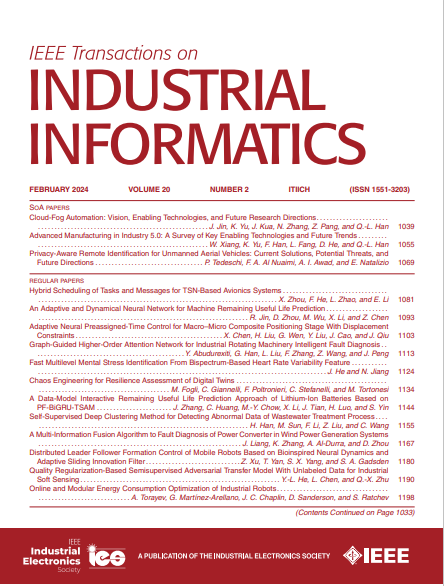室内可见光通信系统以用户为中心的联网:基于频谱聚类的方法
IF 9.9
1区 计算机科学
Q1 AUTOMATION & CONTROL SYSTEMS
引用次数: 0
摘要
可见光通信(VLC)技术已成为解决室内工业通信场景严格要求的一种有前景的解决方案,例如智能工厂的动态容量要求。然而,超密集VLC接入点的部署不可避免地给VLC用户设备带来了新的挑战,包括与干扰控制、资源分配和小区间切换相关的困难。基于这些,本文提出了一种针对室内VLC系统的以用户为中心的网络策略。提出的算法首先通过使用频谱聚类来划分网络,从而最大限度地减少子网间的干扰,从而解决系统范围的干扰缓解问题。随后,在每个子网内采用正交子信道分配,以及跨子网的子信道多路复用。仿真证明了我们提出的方法的有效性,与基准测试相比,在可实现的速率方面展示了卓越的性能。本文章由计算机程序翻译,如有差异,请以英文原文为准。
User-Centric Networking for Indoor Visible Light Communication Systems: A Spectral Clustering-Based Approach
Visible light communication (VLC) technology has emerged as a promising solution to address the stringent requirements of indoor industrial communication scenarios, such as the dynamic capacity requirements of smart factory. However, the inevitable deployment of ultra-dense VLC access points introduces new challenges for VLC user equipments, including difficulties related to interference control, resource allocation, and intercell handover. Motivated by these, this article proposes a user-centric networking strategy tailored for indoor VLC systems. The proposed algorithm initiates by tackling system-wide interference mitigation through the use of spectral clustering to partition the network, thereby minimizing intersubnetwork interference. Subsequently, orthogonal subchannel allocation within each subnetwork is employed, along with subchannel multiplexing across subnetworks. Simulations demonstrate the efficacy of our proposed methods, showcasing superior performance in terms of achievable rates compared to benchmarks.
求助全文
通过发布文献求助,成功后即可免费获取论文全文。
去求助
来源期刊

IEEE Transactions on Industrial Informatics
工程技术-工程:工业
CiteScore
24.10
自引率
8.90%
发文量
1202
审稿时长
5.1 months
期刊介绍:
The IEEE Transactions on Industrial Informatics is a multidisciplinary journal dedicated to publishing technical papers that connect theory with practical applications of informatics in industrial settings. It focuses on the utilization of information in intelligent, distributed, and agile industrial automation and control systems. The scope includes topics such as knowledge-based and AI-enhanced automation, intelligent computer control systems, flexible and collaborative manufacturing, industrial informatics in software-defined vehicles and robotics, computer vision, industrial cyber-physical and industrial IoT systems, real-time and networked embedded systems, security in industrial processes, industrial communications, systems interoperability, and human-machine interaction.
 求助内容:
求助内容: 应助结果提醒方式:
应助结果提醒方式:


